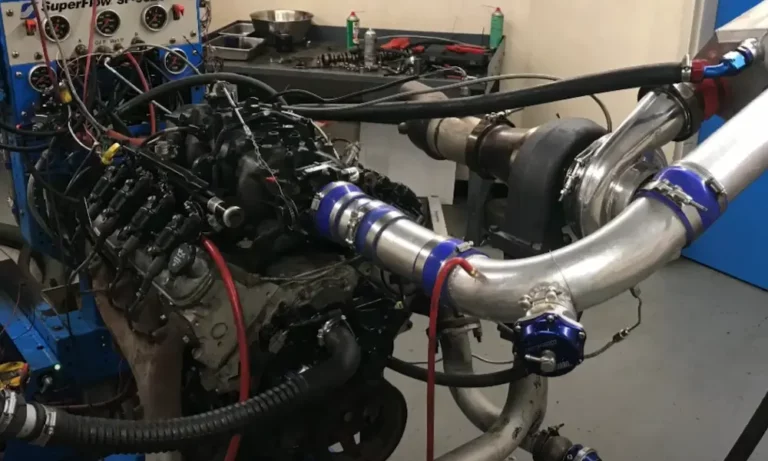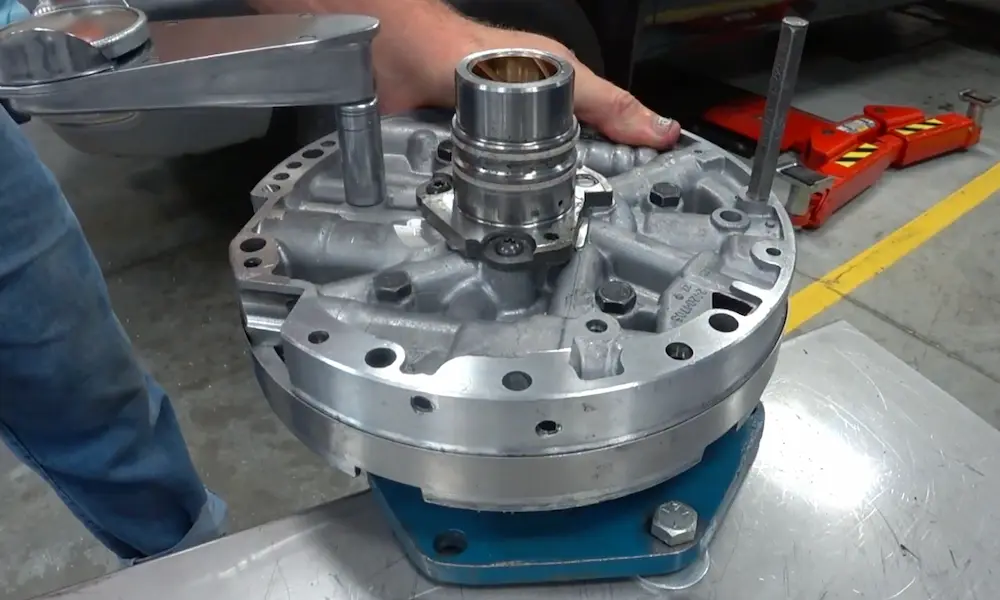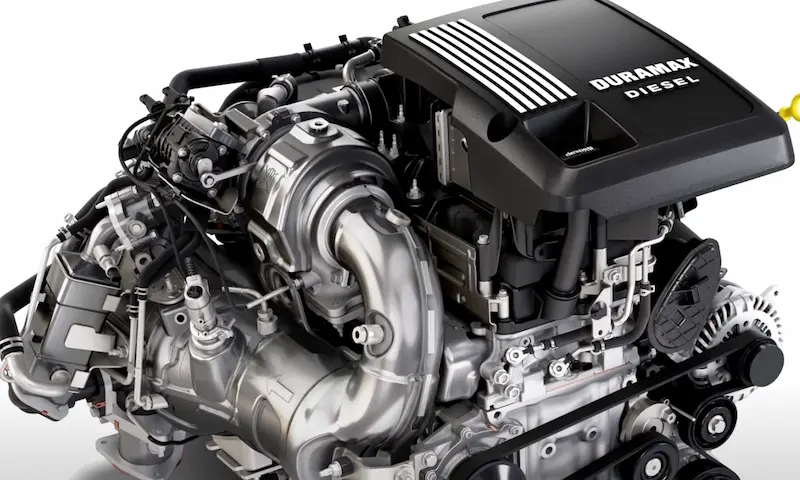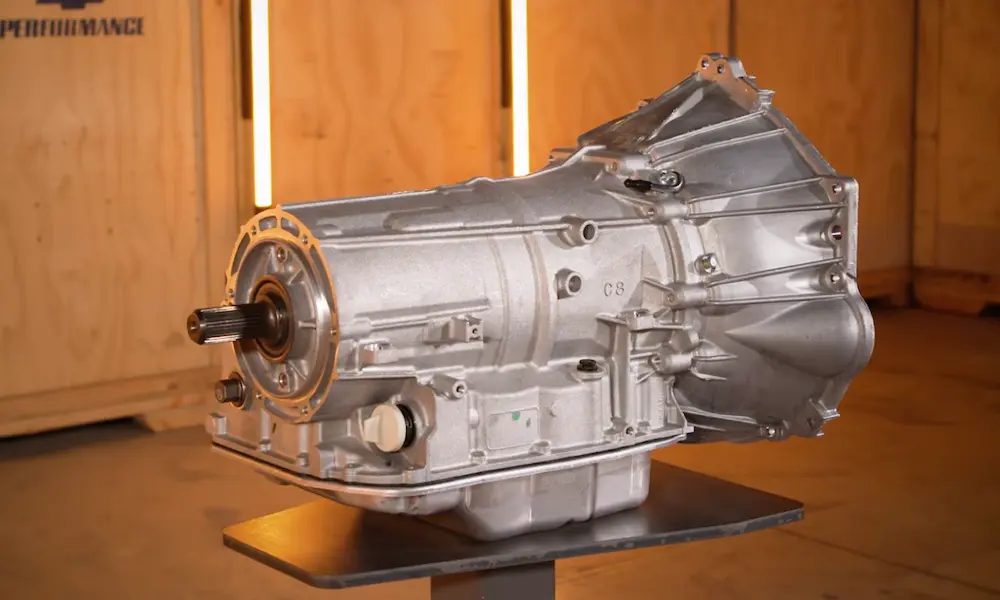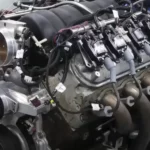Ever wondered what makes the L33 engine special among GM’s powerplants? This aluminum wonder packs surprising punch in a lightweight package that’s become a favorite among truck enthusiasts and performance builders alike.
If you’re researching the L33 for a project, considering a truck with this engine, or just curious about this unique GM offering, you’ll find everything you need to know right here.
What Is the L33 Engine?
The L33 is GM’s high-output 5.3-liter V8 engine, produced from 2005 to 2007. Unlike standard 5.3L truck engines, the L33 (nicknamed “Vortec 5300 HO”) features an aluminum block instead of iron, setting it apart from the common LM7 variants.
This engine was exclusively available in extended-cab, standard-bed, four-wheel-drive Chevrolet Silverado 1500 and GMC Sierra 1500 trucks. Only about 25% of these trucks came equipped with this special engine, making it relatively rare compared to other GM powerplants of the era.
What makes the L33 truly interesting is how it bridges the gap between truck utility and sports car performance. Despite being a truck engine, it shares design elements with GM’s performance car engines, making it something of a hidden gem in the truck world.
L33 Engine Specifications
Let’s break down the key specs that make the L33 tick:
| Specification | Details |
|---|---|
| Engine Type | 5.3L V8, 90° Aluminum Block |
| Displacement | 325 cubic inches (5.3 liters) |
| Bore × Stroke | 3.78″ × 3.62″ (96mm × 92mm) |
| Compression Ratio | 9.9:1 to 10.0:1 |
| Horsepower | 310-313 hp @ 5,200 rpm |
| Torque | 325-335 ft-lbs @ 4,000 rpm |
| Firing Order | 1-8-7-2-6-5-4-3 |
| Block Material | Aluminum with cast-in cylinder liners |
The L33’s aluminum block construction provides a significant weight advantage over iron-block engines, improving overall performance and fuel economy. The engine uses flat-top pistons borrowed from the LR4 4.8L engine instead of the dished pistons found in standard LM7 engines, helping achieve its higher compression ratio.
What Makes the L33 Special?
The L33 isn’t just another 5.3L GM engine—several key design elements set it apart:
Performance-Oriented Cylinder Heads
The L33 uses “799” cylinder head castings that are nearly identical to the high-performance “243” heads found in LS6 and LS2 engines. These heads feature improved intake and exhaust port designs, significantly boosting breathing capability and power output compared to standard truck engine heads.
Exclusive Camshaft Profile
Unlike other GM engines, the L33 features a unique camshaft profile not shared with any other engine in the lineup. At .050-inch lift, the specs include:
- 193 degrees duration
- .482 inches maximum lift
- 116 degrees lobe separation angle (LSA)
This specialized cam provides the perfect balance between truck-friendly low-end torque and the increased high-end power that earns the “HO” designation.
Simplified Design
The L33 lacks the Variable Valve Timing (VVT) and Active Fuel Management (AFM) systems found in later GM engines. Many enthusiasts prefer this simpler, more reliable mechanical design, especially when planning modifications.
Performance and Real-World Application
In stock form, the L33 delivers 310-313 horsepower and 325-335 ft-lbs of torque—a noticeable improvement over the standard LM7 5.3L engine’s 295 horsepower. This power increase comes from the improved cylinder heads, higher compression ratio, and specialized camshaft profile.
The aluminum block construction also contributes to overall vehicle performance by reducing front-end weight, improving weight distribution and handling in the trucks it powered. This makes L33-equipped trucks feel more nimble and responsive than their iron-block counterparts.
Despite being designed for trucks, the L33’s performance characteristics allow it to excel in various driving scenarios. It maintains the low-end torque necessary for truck duties like towing and hauling while offering improved high-rpm performance for more spirited driving.
Modification Potential: Unleashing the L33
If there’s one area where the L33 truly shines, it’s modification potential. Thanks to its aluminum block, improved cylinder heads, and absence of complex systems like VVT and AFM, the L33 provides an excellent foundation for performance builds.
Many enthusiasts consider the L33 essentially a “small bore LS6,” making it compatible with many of the same modifications that work well on GM’s performance car engines. According to engine modification experts, the L33 typically sells for around $1,300 in the used market, making it a cost-effective starting point for projects.
Easy Bolt-On Improvements
Basic modifications that yield noticeable gains while maintaining reliability include:
- Cold air intake systems
- Aftermarket exhaust components
- Electric fan conversion kits (replacing the factory mechanical fan)
These initial modifications can be accomplished with basic mechanical skills and tools, making them accessible to a wide range of enthusiasts.
Advanced Performance Builds
For those seeking more significant gains, the L33’s robust construction provides an excellent foundation:
- The thick cylinder walls offer exceptional strength for forced induction applications
- When properly built, the engine can handle approximately 750+ horsepower
- With proper supporting modifications, it can safely rev to 7,000 rpm
Professional tuning is highly recommended when pursuing aggressive modifications, with particular attention to optimizing the ECM parameters for:
- Increased redline
- Adjusted shift points
- Elimination of torque-limiting restrictions in factory programming
This tuning flexibility, combined with the engine’s inherent strength, makes the L33 exceptionally versatile for performance applications ranging from mild street builds to high-horsepower racing platforms.
Where to Find the L33 Engine
Since the L33 was only produced for three model years (2005-2007) and installed in specific truck configurations, finding one requires some detective work. Here are your best options:
- OEM Vehicle Purchase: Look for 2005-2007 extended-cab, standard-bed, four-wheel-drive Chevy Silverado or GMC Sierra 1500 trucks. Verify the engine by checking the VIN code “B” in the 8th position.
- Salvage Yards and Engine Pullers: Many L33 engines enter the used market when their donor vehicles are scrapped. Specialists who pull engines from salvage vehicles often know what they have and price L33s accordingly.
- Online Marketplaces: Websites like eBay, Facebook Marketplace, and forums dedicated to GM trucks and LS engines frequently list L33s for sale. Prices typically range from $1,000-$2,000 depending on condition and completeness.
- Engine Swap Specialists: Some companies specialize in LS-family engine swaps and maintain inventories of desirable engines like the L33. They often offer tested engines with warranties, though at premium prices.
Common L33 Engine Issues and Solutions
While the L33 is generally reliable, there are a few issues to be aware of:
Oil Consumption
Some L33 engines develop oil consumption issues as they age, typically due to worn valve seals or piston rings. If you notice blue smoke from the exhaust or need to add oil between changes, consider:
- Performing a compression test to check for ring wear
- Replacing valve seals if compression is good but consumption persists
- Rebuilding the engine with new rings in severe cases
Cooling System Challenges
The aluminum block’s different expansion characteristics compared to iron blocks can sometimes lead to cooling system issues:
- Ensure your cooling system is properly maintained with clean coolant
- Consider upgrading to a higher-capacity radiator for modified engines
- Monitor coolant temperatures carefully, especially when towing or during high-performance driving
Fuel System Limitations
The stock fuel system becomes a limitation when modifying for significant power gains:
- Factory injectors max out at around 400-450 horsepower
- The stock fuel pump struggles beyond 450 horsepower
- For builds exceeding these numbers, upgrade both injectors and fuel pump simultaneously
L33 vs. Other GM 5.3L Engines
How does the L33 stack up against other GM 5.3L engines? Let’s compare:
| Feature | L33 (5.3L HO) | LM7 (5.3L) | LH6 (5.3L) |
|---|---|---|---|
| Block Material | Aluminum | Iron | Aluminum |
| Compression Ratio | 9.9-10.0:1 | 9.5:1 | 9.5:1 |
| Cylinder Heads | “799” LS6-style | “706” truck-style | “799” or “243” |
| Horsepower | 310-313 hp | 295 hp | 300-315 hp |
| AFM/VVT | No | No | Yes (AFM) |
| Production Years | 2005-2007 | 1999-2007 | 2005-2009 |
| Applications | Select 1500 trucks | Various trucks/SUVs | Various SUVs |
The L33’s unique combination of aluminum construction, higher compression, specialized camshaft, and performance-oriented cylinder heads gives it advantages over standard LM7 engines. While the later LH6 matches some specs, its AFM system makes it less desirable among enthusiasts planning modifications.
Swapping an L33 into Other Vehicles
The L33’s excellent power-to-weight ratio and strong response to modifications make it a popular choice for engine swaps. Common swap candidates include:
- Older GM trucks and SUVs
- Classic muscle cars
- Jeeps and off-road vehicles
- Project cars like Miatas, S10s, and kit cars
A complete L33 swap typically requires:
- The engine itself (preferably complete from intake to oil pan)
- Engine control module (ECM) and wiring harness
- Transmission with compatible bellhousing pattern
- Appropriate motor mounts for your specific vehicle
- Cooling system components
- Exhaust manifolds or headers compatible with your vehicle
- Tuning to optimize performance and eliminate error codes
The L33 Legacy
Despite its short production run, the L33 has secured a place in GM engine history for several reasons:
- It represents one of the first aluminum-block truck engines from GM, pointing toward the future of lighter, more efficient powertrains
- Its performance-oriented design elements showcase how truck engines could benefit from technology typically reserved for sports cars
- Its modification-friendly nature has made it a favorite among enthusiasts looking for a solid foundation for performance builds
The L33’s influence continues today through its ongoing popularity in the performance aftermarket and the lessons GM applied to later engine designs. While production ended after only three model years, the L33’s reputation as one of the most desirable truck engines from its era remains intact.
Building Your Own High-Performance L33
If you’ve acquired an L33 and want to unlock its potential, here’s a basic roadmap for building a high-performance version:
Stage 1: Basic Bolt-Ons (400-425hp)
- Cold air intake
- Performance exhaust headers
- High-flow catalytic converters or complete exhaust system
- Electric cooling fan conversion
- Professional tune
Stage 2: Mild Performance Build (450-500hp)
- Stage 1 modifications plus:
- Camshaft upgrade (more duration and lift)
- Valve springs compatible with new cam
- CNC-ported cylinder heads or aftermarket heads
- Intake manifold upgrade
- Larger throttle body
- Professional tune with raised rev limit
Stage 3: Serious Performance (550hp+ naturally aspirated)
- Stage 2 modifications plus:
- Forged rotating assembly (pistons, rods)
- Higher compression ratio
- Fully ported heads with larger valves
- Aggressive camshaft profile
- High-rise intake manifold
- Fuel system upgrades
- Custom exhaust system
- Comprehensive professional tune
For forced induction builds, the L33’s aluminum block and robust bottom end provide an excellent starting point, but additional considerations for fuel, cooling, and engine management become essential as power levels increase.
The L33 engine represents one of GM’s most interesting truck powerplants—a specialized 5.3L V8 that combines lightweight construction with performance-oriented design elements. Its limited production run and specific application have made it somewhat rare, but its reputation for performance potential continues to drive demand among enthusiasts.
Whether you’re maintaining a stock L33-equipped truck, planning modifications, or considering this engine for a swap project, understanding its unique characteristics helps you maximize its potential. With the right approach, the L33 delivers an exceptional balance of power, reliability, and performance that few other truck engines of its era can match.

